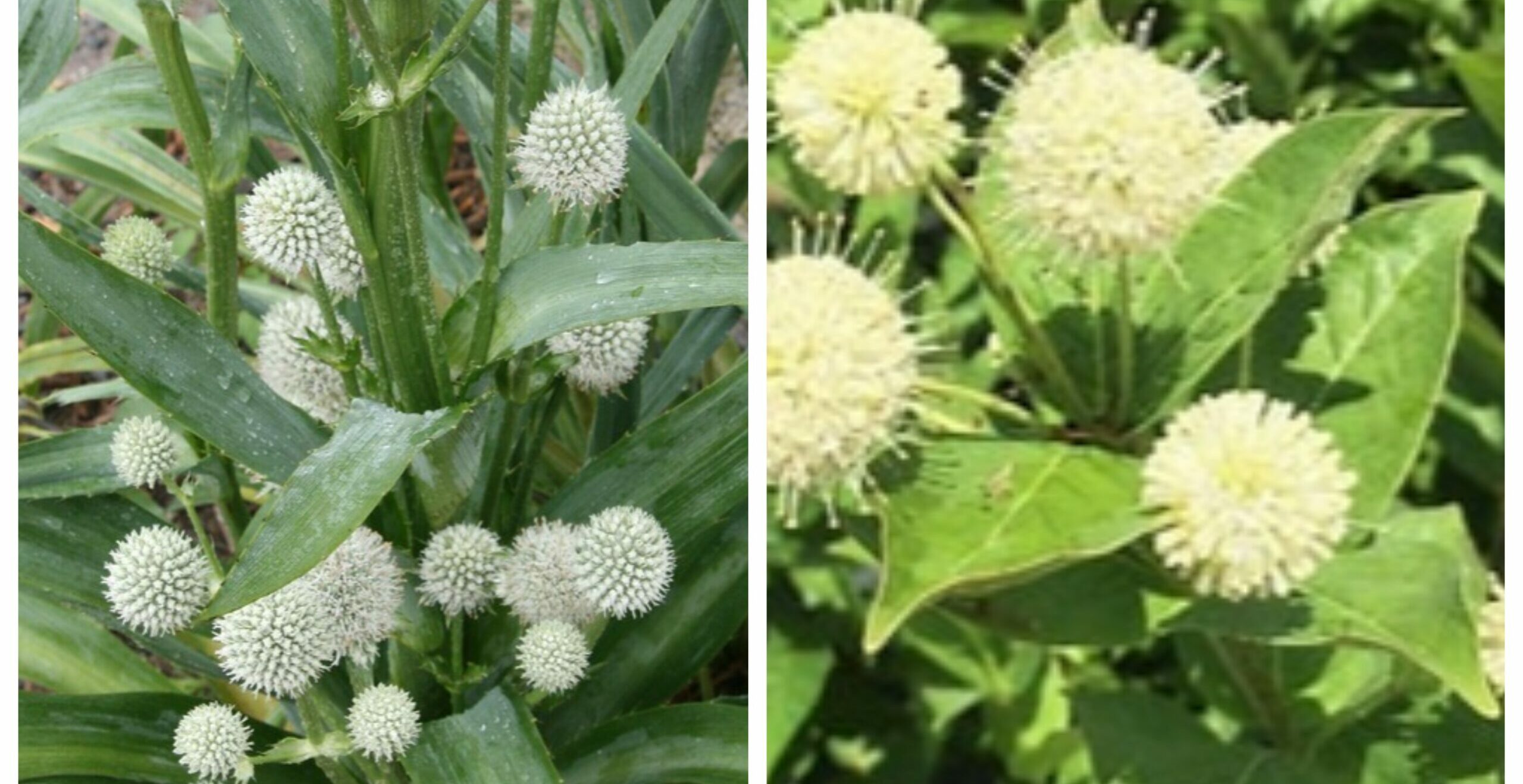Unique blooms: Rattlesnake master and buttonbush

MILAN, Ill. — Nature is an incredible artist and evolution has produced an overabundance of diversity. Plants in every form from spreading to climbing, vase-shaped, columnar, leaves in various shapes, colors, and arrangements.
The two species featured in this article are about as opposite as plants get. One likes moist sites, the other prefers dry soils. One is a shrub, the other an herbaceous perennial.
What they have in common is their bloom, an uncommon sphere shape. These white floral globes are eye-catching in a landscape and will attract people and pollinators alike.
Rattlesnake Master (Eryngaium yuccifolium)
From spiny basal foliage, sturdy stalks emerge in late summer to bear bristly, globular flower heads. What we recognize as a flower is, in fact, many small flowers clumped together to form a composite flower head.
Rattlesnake master is a member of the carrot family but produces foliage more akin to a yucca (yuccifolium means ‘yucca-like foliage’). Course, long, linear leaves are clustered at the base of the plant. Flower stalks emerge from the leaves on sturdy stalks to tower above the foliage. Each stalk produces multiple branches at the apex to bear one composite flower on each stalk.
Native to much of the eastern United States south of New England, rattlesnake master tolerates soil moisture conditions from moderately wet to moderately dry and requires full sun exposure. Small native bees and moths benefit from the nectar and the plant is a host for the Eryngium stem-borer moth and black swallowtail.
Buttonbush (Cephalanthus occidentalis)
A medium-sized shrub with a rounded, open shape easily blends into the landscape or serves as a structural element in a garden until mid-summer when hundreds of white globe-shaped flower clusters begin to bloom. Floral heads develop a crimson color in the fall and persist into the winter, extending the seasonal interest.
Native to Illinois, buttonbush grows in low woods, swamps, or water corridors. It requires medium to wet soils and will tolerate saturated soil conditions for short periods of time making it an excellent species for rain gardens or bioswales. Buttonbush requires full sun to part shade to achieve its full potential of 12 feet tall and eight feet wide. Left alone, buttonbush can develop a leggy habit but the species responds well to heavy pruning which can be used to train a plant into a more desirable form.
An alternative common name for buttonbush is honeyball which hints at the flowers’ appeal to bees. Other species utilize the floral resources too including skippers, butterflies, and moths. Seeds and floral heads are consumed by wildlife, especially waterfowl. The leaves of buttonbush are poisonous to livestock and other animals making it resistant to deer pressure.
Miss Clipping Out Stories to Save for Later?
Click the Purchase Story button below to order a print of this story. We will print it for you on matte photo paper to keep forever.

